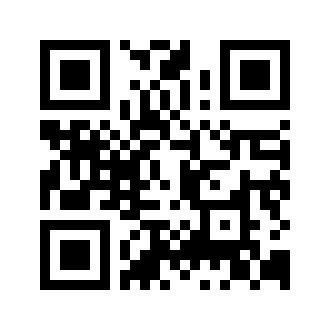What is the fresnel lens?
Fresnel lenses resemble a planoconvex or planoconcave lens that is cut into
narrow rings and flattened. If the steps are narrow, the surface of each step is generally made conical and not spherical. The convex surface is reduced to concentric ridges, to avoid overheating and to reduce weight. Fresnel lenses are flat rather than thick in the center and can be stamped out in a mold. Fresnel lenses are commonly used on spotlights. Lamps equipped with this lens are called Fresnels.
Fresnel lenses can be positive or negative. A positive lens is a Fresnel lens with a positive focal length. Negative lenses are Fresnel lenses with a negative focal length. Lens application is an important parameter to consider when searching for Fresnel lenses. Lens application refers to the desired wavelength range for the lens. This wavelength range is mostly dependent upon the lens material. Near infrared Fresnel lenses are designed for use in the 750 nm to 2500 nm wavelength range. Visible Fresnel lenses are designed for use in the 380 nm to 750 nm wavelength ranges. Ultraviolet Fresnel lenses are designed for use in the 4 nm to 380 nm wavelength ranges.
The Fresnel lens is a special optical lens. It can now be made from plastic such as acrylic fresnel lens, PMMA, polyvinyl chloride (PVC), polycarbonate (PC) and HDPE. A traditional glass convex lens would be thick, heavy and very expensive, but a plastic Fresnel lens is a thin, flat, lightweight and low cost alternative.
What is the fresnel lens?
The fresnel lens is a flat and slim optical lens are different with traditional glass lens which is heavy and thicker, it is originally developed by French physicist Augustin-Jean Fresnel for lighthouses.
The fresnel lens made by many engraved groove on the flat plate which Each groove is at a slightly different angle than the next and with the same focal length in order to focus the light toward a central focal point. Every groove can be considered as an individual small lens to bend parallel Fresnel light waves and focus the light.
Fresnel lenses are usually made of glass or plastic; their size varies from large to small. In many cases Fresnel lens are very thin and flat, almost flexible, with thicknesses in the 1 to 5 millimeter range.

Application of Fresnel Lens
The applications for Fresnel lenses include simple magnifiers, lighting and lamp, lighthouse, overhead projector, TV projection, condenser system, camera fresnel spotlight, automobile headlight, fresnel lens solar energy, rear projection Fresnel screen, passive motion detector, traffic sign, fresnel lens photovoltaic, fresnel solar concentrator, collimator, fresnel flight simulator, optical landing system, etc
Types of Fresnel Lenses
There are a lot of types of Fresnel lens, such as: positive Fresnel lens, negative Fresnel lens, Fresnel lens array, cylindrical Fresnel lens, circular Fresnel lens, linear Fresnel lens, lenticular Fresnel lens, diffraction Fresnel, Fresnel reflection, Fresnel beamsplitter and Fresnel prism.
Advantages of Fresnel Lens
The Fresnel lenses can be applied to designs and manufactured in very large sizes with light weight due to less than 4mm thickness, lower cost than traditional magnifiers and significant lesser weight. In contrast, a conventional glass lens would be 200mm thick and weigh over 50kgs and cost thousand of dollars, sacrificing convenient.
Significantly reduced lens thickness results in a substantial savings in material cost. Fresnel lenses can reduce weight, which reduces mounting and assembly cost. Extremely giant Fresnel lens up to 1000mm can be used to replace a very expensive conventional mirror assemblies in large optical systems.
How to calculate the fresnel magnification?
Fresnel lens are used to form an image large than the normal image of an object on the retina of the eyes. The largest sharp retinal image of the unaided eye is formed when the object is at a distance of 25cm from the eye: for most people , this is the distance of most distinct vision, Placing a fresnel magnifier between the object and the eye permits the object to be moved closed to the eye, and the eye is able to focus on the virtual image formed, preferably, at the distance of the most distinct vision. Fresnel Magnification calculate usually taken as M= 250mm/f+1 Where is the fresnel focal length.
Because the fresnel lens can be made large, Fresnel lenses are generally use to magnify objects slightly,perhaps as little as 1.3 or 1.5X. One usually expects to see the entire object at once within the fresnel lens, so that the fresnel lens must the be 1.3 or 1.5 times the size of the object in both length and width.
- Home
- About us
- Products
- Bullion Reading Magnifier Bar
- Bar Magnifier with Scale
- 2X Bar Magnifier
- Bar Magnifier with Clip
- Bar Magnifier with Ball Pen
- Bar Magnifier with Yellow Guiding Line
- Bar Magnifier with Handle
- 3X Bar Magnifier
- Bar Magnifier with Handle 8inches
- Dome Bar Magnifier
- Ruler Magnifier for School
- Ruler Magnifier
- FAQ
- Contact Us
- News
Labels
bar magnifier
bar
acrylic bar magnifier
fresnel lens
magnifying glass
3X magnification
3x
FAQ
LED magnifier
OEM
bar magnifier with ball pen
bar magnifier with handle
bar magnifier with pen
bar magnifier with yellow line
card lens
dome magnifier
for school
fresnel
handheld magnifier
hands-free magnifier
keychain magnifier
low vision
magnifier
magnify
magnifying ruler
manufacturer of magnifier
page magnifier
pocket magnifier
promotional gift
ruler
ruler magnifier
-
About
E-Tay Industrial Co., Ltd http://www.magnifier.com.tw http://www.emagnifier.com E-mail: etay@ms4.hinet.net TEL: 886-2-27092137 FAX: 886-2-27098278 12F., No.137, Sec 4, Xinyi Rd., Da'an Dist., Taipei City 106, Taiwan
Copyright ©
Bar Magnifier | Powered by Blogger







0 意見:
張貼留言